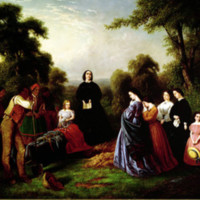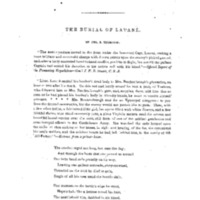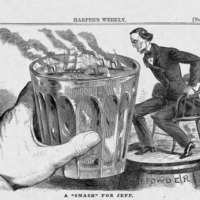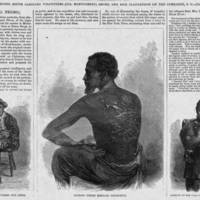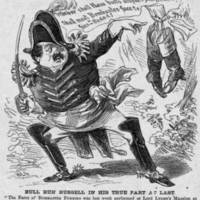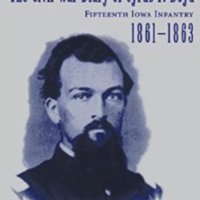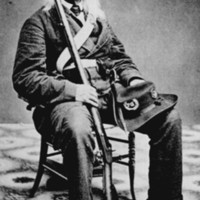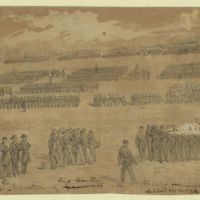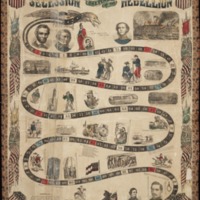Browse Items (26 total)
- Tags: Civil War America
Sort by:
The Burial of Latané
William D. Washington’s renowned painting, The Burial of Latané (1864), poignantly captured a Confederate memory of the Civil War. The painting depicts the funeral of Confederate Captain William Latané who led Confederate forces to a victory at…
Tags: Civil War America
The Burial of Latané
John Thompson’s celebrated poem, “The Burial of Latané,” epically portrays a Confederate victory at Hanover Courthouse, Virginia. In June of 1862, Confederate General J. E. B. Stuart led the 9th Virginia Calvary in a scouting…
Tags: Civil War America
A "Smash" For Jeff
In the cartoon, Jefferson Davis is placed on a chair upon a barrel of gunpowder. There is a large hand giving Jefferson Davis a large cup containing a “smash.” The “smash” contains a grouping of ships crowded in the water. The ships in the cartoon…
Tags: Civil War America
A Typical Negro
The July 4, 1863 issue of Harper's Weekly featured three illustrations of Gordon, an escaped Mississippi plantation slave who sought refuge with the Union army. Harper’s staff based their illustration upon a photograph taken in Baton Rouge in April…
Bull Run Russell in his True Part at Last
This cartoon references Bombastes Furioso, a “a burlesque tragic opera,” which was popular in the nineteenth century. In Bombastes Furioso, King Artaxaminous wishes to leave his wife for Distaffina, who is betrothed to General Bombaste.…
Tags: Civil War America
Cyrus R. Boyd on Shiloh
Cyrus Boyd was a twenty-four-year-old Iowa farmhand when he enlisted in the Fifteenth Iowa Volunteer Infantry in October 1861. Like many white men at the beginning of the war, Boyd thought the fighting would be over fairly quickly and worried about…
Tags: Civil War America
Diary of Edmund Ruffin
Edmund Ruffin, a Virginia slaveholder, had been a strong proponent of secession. In the following excerpts from his diary, Ruffin recounted his family’s troubles with their slaves during the early years of the war on their Marlbourne plantation as…
Tags: Civil War America
Double-Quick Step To Richmond
This cartoon, published in Harper's Weekly shortly after the beginning of the Civil War, depicted an unidentified Union soldier chasing an unidentified Confederate Soldier to Richmond, Virginia, the Confederate capital. This cartoon showed that most…
Tags: Civil War America
Execution of Five Deserters in the 5th Corps
Civil War legal codes define desertion as the deliberate abandonment of one’s military duty with the intention to remain absent. The earliest estimate of Confederate desertion comes from December 1862, when the fledgling army found several thousand…
Tags: Civil War America
